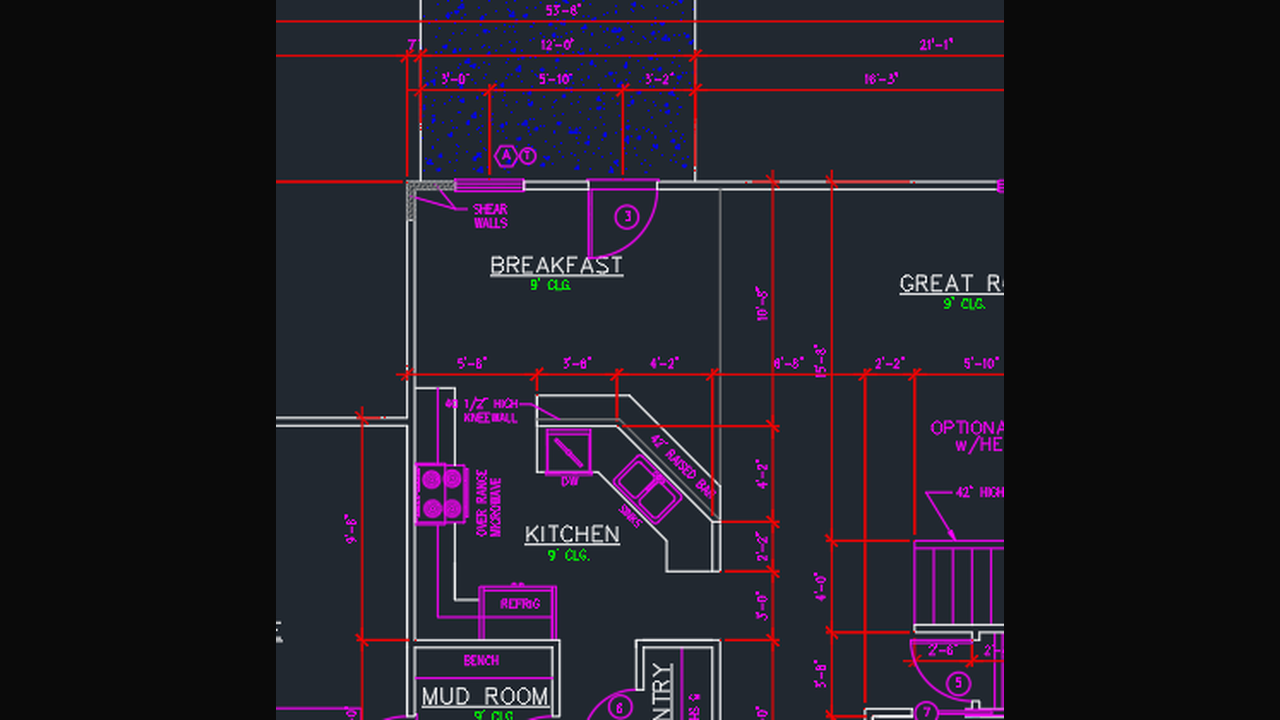How to Read a Floor Plan
Editor’s Note (Updated 2025): This post has been refreshed with clearer examples and tips to help today’s buyers understand floor plans for new construction homes in Savannah, Richmond Hill, Guyton, and Effingham County.
It may seem like a random collection of lines and boxes, but in reality, a floor plan is a treasure map. Remember stories you read as a child, with wild pirates searching for booty using a worn roll of tattered cloth covered with mysterious symbols and vague, scribbled words? To us, the map looked like nothing special, but to the pirates, it was a blueprint for a dream. The floor plan for your new home, which some may still call a blueprint, helps you discover the joy in your house before you even see the completed structure.
When we “read” a floor plan with dimensions, the simple lines and arcs become walls, doors and windows, and we can imagine ourselves in our “home”. We might wonder how the spaces will feel both empty and filled with furniture, people and pets. But reading a floor plan is a bit like learning a foreign language. You need to master the alphabet before you can become fluent. Once you’re able to “translate” the subtleties of “floor plan speak”, you’ll be able to determine which home is right for your family.

What Is a Floor Plan?
A floor plan is a scaled drawing that shows the layout of a home from a “bird’s-eye” view. It outlines walls, doors, windows, and how rooms connect to one another. Good floor plans also show dimensions, key fixtures (like tubs, sinks, and kitchen appliances), and sometimes even suggested furniture placements. This helps you understand how you’ll move through the space day to day.
Common Floor Plan Symbols
Before diving into specific rooms, it helps to get familiar with a few common symbols:
- Walls: Usually shown as parallel lines that outline each room.
- Doors: Drawn as a thin line attached to a wall with an arc showing how and where the door swings.
- Windows: Lines or breaks along the walls indicating glass openings.
- Stairs: A series of rectangles or lines with an arrow to show the direction of travel.
- Plumbing fixtures: Icons for toilets, tubs, sinks, and showers.
- Appliances: Outlines for refrigerators, stoves, dishwashers, and laundry units.
Understanding Dimensions
Most floor plans show measurements in feet and inches. You may see dimensions written along walls (for example, 12'-0" x 15'-6"), or as strings of numbers outside the main drawing.
- Room size: Typically listed as length by width. Think about how your furniture will fit within those numbers.
- Ceiling height: Sometimes shown in a separate note (for example, “9' ceilings”). Higher ceilings can make rooms feel more open.
- Clearances: Pay attention to space around islands, doors, and appliances so traffic can flow comfortably.
How Rooms Connect
Once you’re comfortable with the symbols and numbers, focus on how the rooms relate to one another:
- Open concept vs. defined rooms: Are the kitchen, dining, and great room fully open, or do walls and cased openings create more separation?
- Bedroom locations: Are secondary bedrooms grouped together? Is the primary suite separated for privacy?
- Traffic patterns: Imagine walking from the garage to the kitchen with groceries, or from bedrooms to bathrooms at night.
- Outdoor connections: Look for patios, porches, and how easily you can access your backyard from the main living areas.
Key Areas to Study on a Floor Plan
Kitchen & Dining
The kitchen is often the heart of the home, so study this area carefully:
- Check the relationship between the sink, stove, and refrigerator (often called the “work triangle”).
- Look at island size and seating to see if it fits how you entertain.
- Note the pantry location and overall storage.
- See how the kitchen connects to the dining area, breakfast nook, or great room.
Living & Gathering Spaces
Think about how you’ll relax and host guests:
- Look at the size and shape of the great room or family room.
- Check window placement for natural light.
- Consider TV or fireplace locations and how your furniture might be arranged.
Bedrooms & Bathrooms
- Confirm how many bedrooms you need now — and whether you might need a flex room or guest room later.
- See how many bathrooms are full vs. half baths.
- Check privacy: is the primary suite tucked away from main living areas and secondary bedrooms?
Storage & Everyday Function
- Locate closets, linen storage, and pantry space.
- Look at the laundry room location — near bedrooms, near the kitchen, or close to the garage.
- Review drop zones, mud rooms, and entry spaces to see how the home handles “real life” clutter.
Comparing Floor Plans
When you’re reviewing multiple plans, it can help to:
- Make a list of “must-haves” (bedroom count, garage size, main-floor bedroom, etc.).
- Highlight “nice-to-haves” like a flex room, covered porch, or extra storage.
- Walk through model homes or virtual tours using the floor plan as your guide.
- Ask your new home specialist to explain anything that isn’t clear — they read floor plans every day.
Bring Your Floor Plan to Life
Once you understand how to read a floor plan, you can quickly tell whether a home fits your lifestyle — long before the foundation is poured. If you’re ready to explore new home designs in the Savannah, Richmond Hill, Guyton, or Effingham County areas, our team is happy to help.
Browse our full collection of Ernest Homes floor plans, or contact our Sales Team at 912-660-9673 or through our Contact Us page to schedule a personal tour.

